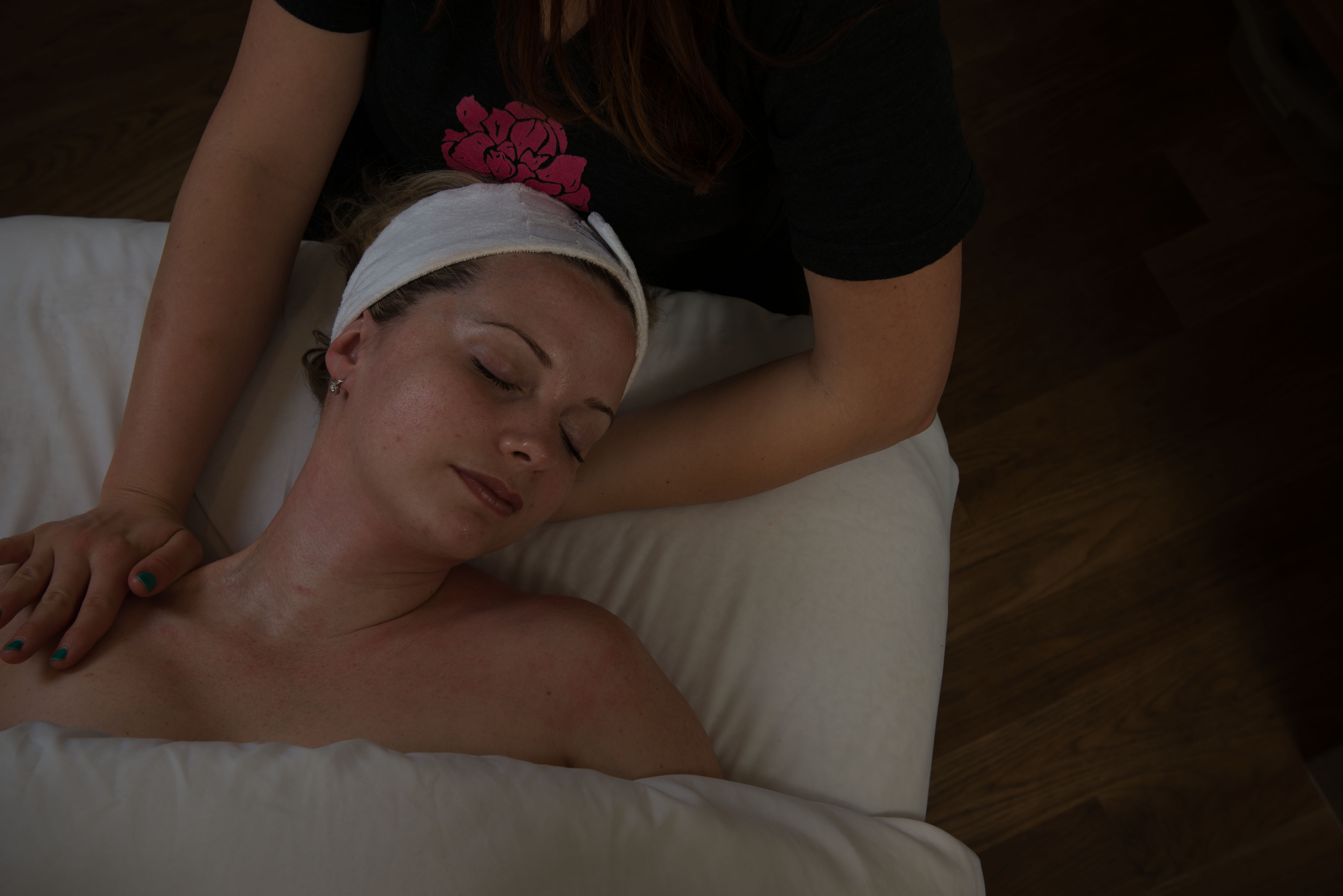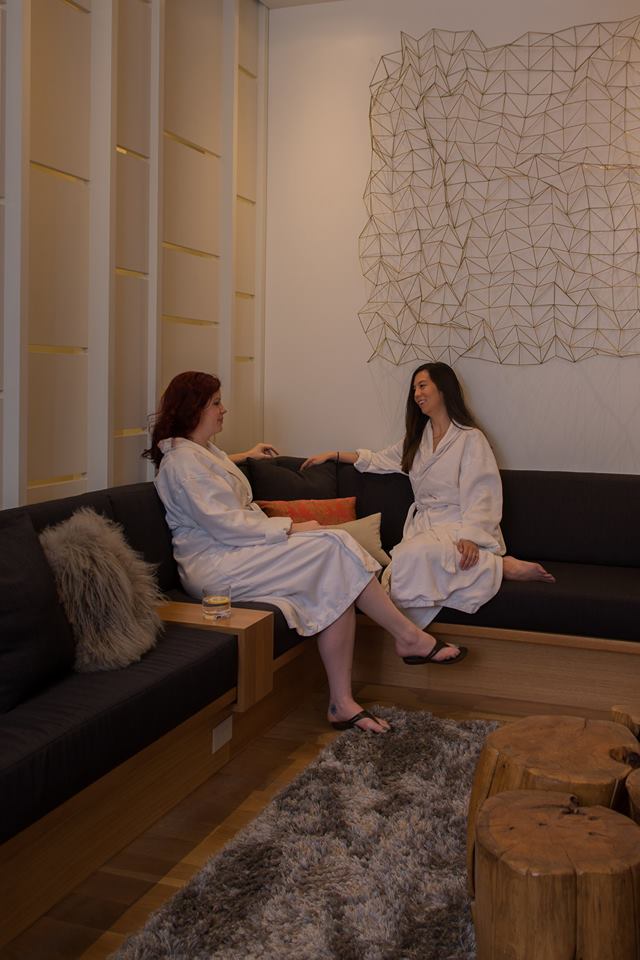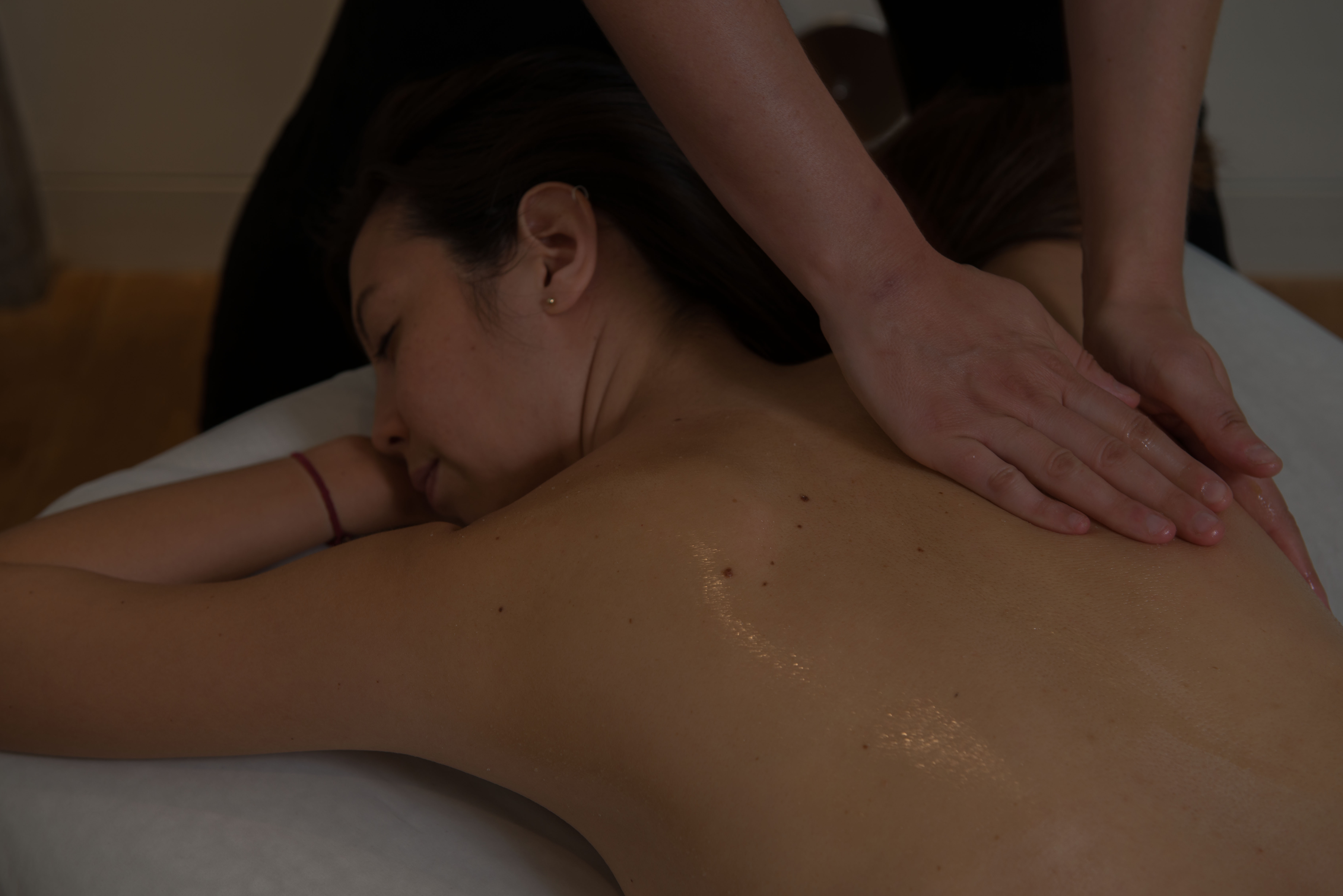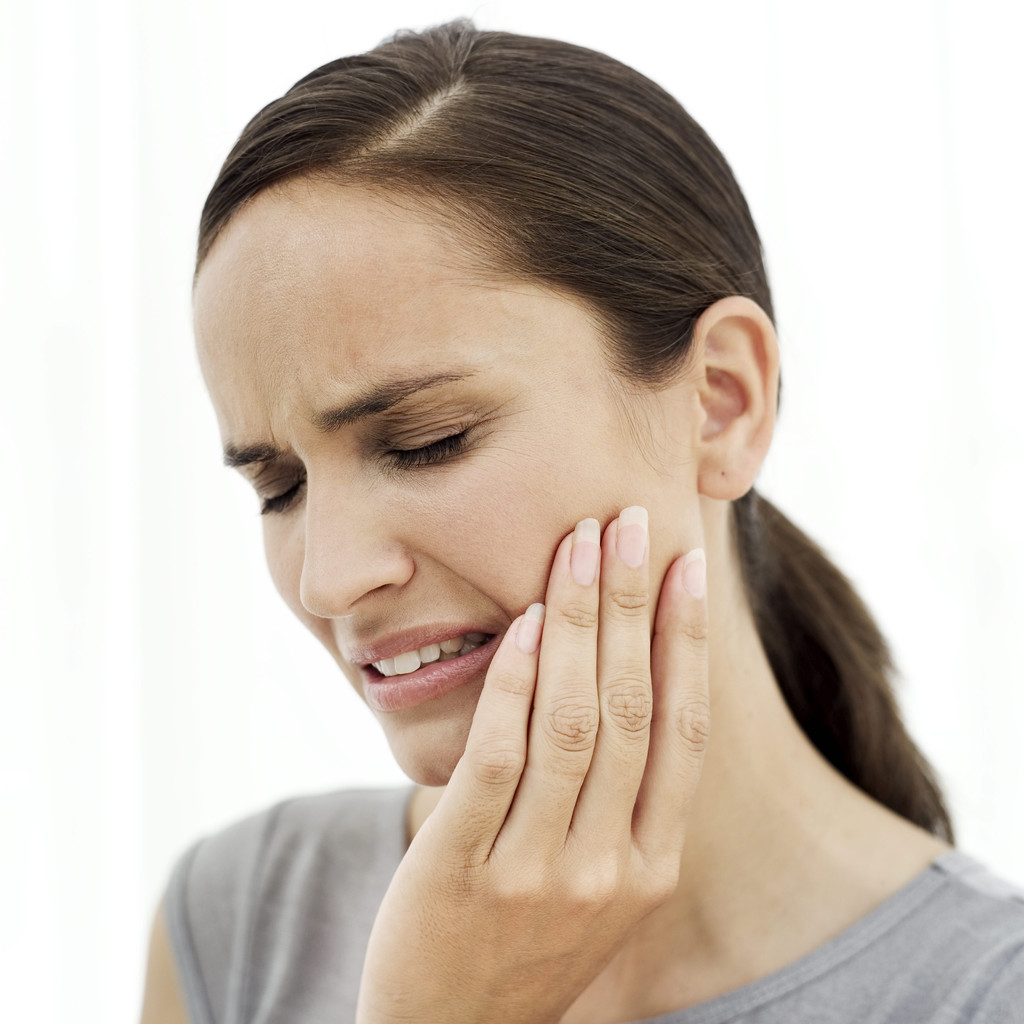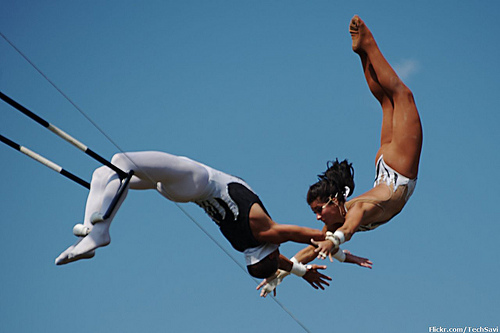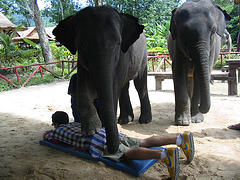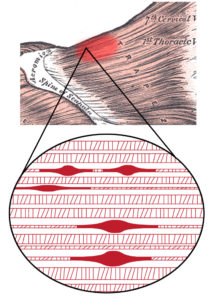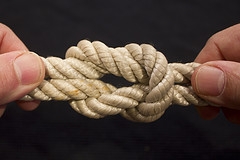To help you get the most out of your massage, we asked 2nd Street District massage therapist, Monique, to share with us the five things everyone should know before going to their next treatment.
From stylists to massage therapists, we’d like to take a moment to introduce you to milk + honey’s newest Spa Partisans. As we continue to grow, we are always looking for amazing spa and salon professionals to join our teams in Austin and Houston. Click here to apply or email your resume to careers@milkandhoneyspa.com.
Let’s meet the newest members…
Your spa day won’t be complete without receiving a luxurious massage at the hands of one of our amazing massage therapists. Let’s meet this talented bunch.
“It is gravity that is the tool; it is gravity that is the therapist.”
— Dr. Ida Rolf
What is Rolfing?
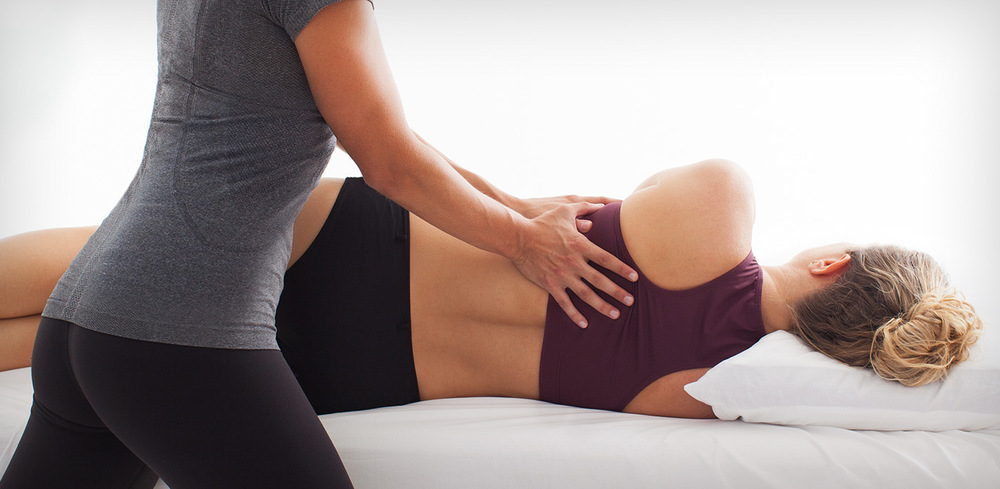
Rolfing is sophisticated system of manual therapy and movement education that — over a series of sessions — help restore and improve structural alignment and functional movement. From this treatment, clients enjoy improved uprightness and range of motion. Many have reported that they experience an increase in energy, ease, and lightness within the body. In a way, it’s a life hack to better performance and quality of life.
Is Rolfing painful?
Rolfing can and does get more intense; though, many usually described it as a “good” pain. It’s important that the Rolfing massage therapist know how much intensity the client’s nervous system can accommodate in order for this treatment to remain safe and effective. Some Rolfers are known for the white-light pain they cause. I am not that kind of Rolfer, but I do understand that this may be what some clients want and expect. Regardless, the experience differs quite a bit from massage, but still feels good for the most part. Furthermore, every intervention has a purpose — structurally or relationally — it’s not random.
How does a Rolfing series work ?

Most Rolfers model sessions to follow one another in a progressive and thorough series. Traditional Rolfers tailor a Ten Series to meet their client’s needs. Each session may have its own goal, but this series will ultimately aim to align your body vertically within gravity. Many of us believe that it is gravity and its effect on our structure and nervous system that produces the incredible effects of Rolfing.
Dr. Who?
The story of Rolfing is inseparable from its founder. In the 1920s, Dr. Ida P. Rolf began working as an associate in the chemistry labs at the Rockefeller Institute for Medical Research in New York City. There, she first began to study fascia. Fascia is the archetypical representation of our bodies’ connective tissue and is the basis of Dr. Rolf’s work.
Later in life, she began remarking on body’s plastic nature, its ubiquity, and its tensile strength. During her study, she found she could elicit astounding changes in posture, function, and stress. During the 1960s, Dr. Rolf was invited to demonstrate her work at Esalen Institute, where she codified her work into a teachable body of craft that she called Structural Integration. Her students and clients called it ‘Rolfing.’ In 1971, she left Esalen and established the Rolf Institute of Structural Integration in Boulder, Colorado where students could learn to become Rolfers.
What are the benefits of Rolfing?
Rolfing is good for people too healthy to receive a diagnosis from a doctor, but not quite as vital as they would desire. It can delay surgeries and it can help people recover faster from surgery. It makes an excellent support for people making a fresh start, people beginning a new fitness regime, or even a new commitment to mental health. It is good for feeling a little younger — for personal “spring cleaning.” It simply helps people to realign themselves in gravity. Obstacles dissolve and people discover what they need when gravity can flow through them in a healthy manner.
Today, one of our expert 2nd Street District massage therapists, talks jaw pain — and how to ease the tension we create for ourselves.
Many of my clients experience jaw pain and tension — it’s very common. Too often, we clench and grind our teeth as a response to stress, a habit that occurs when we try to concentrate, or sometimes, it manifests itself as a subconscious holding pattern we’re not even aware of.
The Context
Let’s start from the beginning. In orthopedic medicine, there is a prevailing idea that the mandible (jaw bone) and the pelvis “talk” to one another. Both of theses bones are directly connected to one another via the spine. The jaw connects to the hyoid bone, which dictates posture and alignment in the neck, along with the atlas. And, on the pelvic end, the pelvis and the sacrum work in tandem to balance us in an upright position at the base of the spine. In short, jaw tension can throw off your entire posture — and it can even cause both hip and lower back pain.
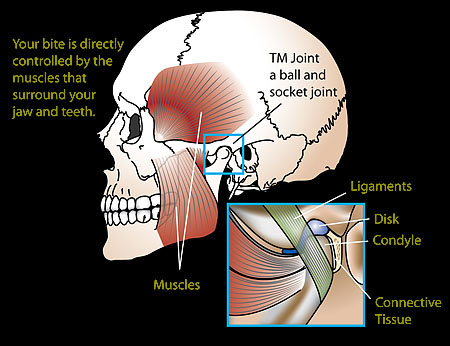
The Culprit
Tension in the jaw can lead to lots of symptomatic pain in the body. For example: did you know that your Masseter muscles — muscles that run from your cheek to your jaw — can exert upwards of 250 pounds of pressure per bite? Now, if you think about that kind of semi-constant tension in your head, it makes sense why those who suffer from chronic jaw tension experience headaches, neck and shoulder pain, and whole-body misalignment.
Another culprit of jaw tension, pain, and TMJ is Malocclusion. Malocclusion is when your teeth meet in a misaligned way as the two dental arches approach each other as the jaws close. Almost everyone has some form of malocclusion, and, generally, orthodontists are only interested in your malocclusion if it causes you pain.
Many orthodontic surgeons think that the best way to treat severe malocclusion is through surgery, believing that night guards, retainers, and other dental applications will not help. What many orthodontist don’t take into consideration is that chronic jaw tension is more often than not a symptom of anxiety and high stress. More importantly it’s a postural choice we make. Whether we are aware that we are making that choice is another question entirely.
Make Yourself Aware
Body awareness is a somatic skill that must be honed in everyone, but especially when you’re dealing with chronic pain and stress. Meditation and physical practices like yoga, pilates, dance, or sports can help you become aware of the inner machinations and connections between your body and mind. See if you can catch yourself in the act of clenching and grinding your teeth.When this happens engage in the mantra, “soften jaw and breathe.” Notice the breath in your body when your teeth are clenched: is it deep or shallow? Rapid or slow? Notice the position of your shoulder blades. Inhale deeply, shrug your shoulders up by your ears tightly, then exhale and drop them completely. Do this several times to allow all of the muscles in your shoulders to release.
Remember you are in control of what you are aware of. Where awareness goes, energy grows.
The Solution
In a spa setting, chronic jaw tension and TMJ pain can be addressed, as long as the client is consistent with massage appointments. Regular-focused masseter, pterygoid, scalp, face, and neck massage can relieve built-up tension and pain. Therapists trained in Craniosacral Therapy can address jaw pain and tension via manual adjustment.
The spa environment, and even the act of carving out time on a consistent basis solely for self-care and self-love, is a huge step toward managing stress. Often, massage therapists and other spa employees are a lot like ESS (Emergency Stress Services). Ideally though, we want our clients to live their best, pain, and stress-free lives. In this day and age, massage and other self-care services are not luxury experiences, but necessary investments in overall well-being and health.
If you are experiencing chronic jaw or if you suffer from TMJ, know that you have support from milk + honey. We have an amazing team of massage therapists who can help you if you are experiencing acute discomfort, and we can refer you to other wellness professionals in the area who can help you tackle the issue from a multidimensional approach.
Have You Met the Newest Faces on the milk + honey Team?
March 10, 2014We’re lucky to have such a talented, inspiring team of stylists, licensed massage therapists, estheticians, and concierges. And as we grow, so does our milk + honey family. Meet the newest faces, and make sure to come in to all three locations to say “hi!”
Meg, stylist at SALON by milk + honey at Arboretum Market

Meg is a beauty industry veteran. After 15 years as a makeup artist and esthetician, Meg sought a new challenge and became a hair stylist. She spent three years in New York, falling in love with her new field, and moved to Austin in 2013. Meg feels a connection to her clients and has a knack for understanding their needs, and creating cuts and colors that are wearable and easy to maintain. She loves creating luxurious blondes, eliminating frizz with keratin smoothing treatments, and cutting sassy pixie styles. When she’s not in the salon, Meg is probably at the movies, cooking extravagant dinners, or playing with her Chinese Crested puppies, Billie and Miles.
Mark, licensed massage therapist at 2nd Street District/Downtown spa

Mark has been in Austin for the past seven years and has been heavily involved in our local dance community. He has two cats whom he likes to spend his spare time with. And when he’s not dancing or chilling with his cats in his down time, he also enjoys yoga and bodywork.
Alyssa, shampoo assistant at Hill Country Galleria salon

Alyssa has been in Austin for the past six months, but she has already fallen in love with the city’s hike and bike trails, music scene, and busy outdoor life. She decided to become a cosmetologist because she loves hair, the salon life, and meeting new people. Her beauty tip is “as long as you own your style, you can pull it off!”
Kim, licensed massage therapist at 2nd Street District/Downtown spa
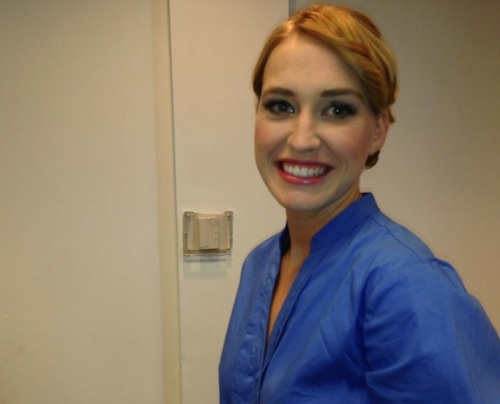
Kim moved to Austin seven years ago. She loves being outdoors, and her favorite place to be (outside of the spa) is the Greenbelt. Kim became a massage therapist because she really wanted to give something special to other people. Her favorite beauty tip is a DIY oil, mixing castor oil and grape seed oil — it’s great for your skin and hair.
Jordan R., nail tech at the SALON by milk + honey at Arboretum Market

Jordan moved to Austin three years ago from Seattle, Washington. She loves it here, and enjoys going to see any concert or live music. Jordan loves being a nail therapist and being able to make others feel beautiful inside and out.
Matt is one of our fantastic massage therapists at milk + honey spa 2nd Street District.
Valentine’s Day is upon us. Whether you prefer to ignore the holiday or embrace your romantic side, love is all around us, especially in the touch.
 Standard descriptions of our holiday describe a cloudy syncretism of historical figures (all martyrs for love), Catholicism, and pagan rituals Click here for History.com’s take on Valentine’s Day. Historians often reach back to 270-300 A.D. to initiate this romantic drama. Mother nature on the other hand seems to have reached back beyond man, beyond monkey, maybe all the way to the vole.
Standard descriptions of our holiday describe a cloudy syncretism of historical figures (all martyrs for love), Catholicism, and pagan rituals Click here for History.com’s take on Valentine’s Day. Historians often reach back to 270-300 A.D. to initiate this romantic drama. Mother nature on the other hand seems to have reached back beyond man, beyond monkey, maybe all the way to the vole.
Have you ever heard of oxytocin? I first heard about this hormone when I was in massage school, but it has since emerged into popular discourse as well. It seems to be present in every mammal on the planet. Human physiology text books echo the initial clinical scrutiny of this nine amino acid chain as a hormone produced by the sex organs for the purpose of letting down milk and contracting the uterus, but subsequent research has revealed a more utilitarian and ubiquitous character to this powerful protein.
First let me kill the suspense, yes oxytocin floods your system before, during, and after all of your sexual experiences. Likewise, laboring mothers experience a massive download of the stuff during and following labor and delivery. The experience of maternal love at first sight, and the amnesia of child bearing pain that sets in when a mother first holds her child, are both moments undoubtedly framed in the pink hazy frill of oxytocin.
I reckon it satisfies some pretty obvious reward systems that perpetuate any species with fur on their bodies, but what is it? A cursory web search describes oxytocin as a wonder molecule that increases feelings of trust and intimacy but it goes deeper than that. Dr Ray Sahelian dryly details a more clinical side to oxytocin on his own forum. He describes a powerful neurohormone and modulator that the hypothatlamic and supraoptic nuclei of the brain, as well as peripheral tissues of the heart and sex organs, produce. The hormone acts on those tissues, as well as the kidney, thymus, and pancreas, resulting in a body-wide response.
As it turns out oxytocin reduces the effects associated with stress and anxiety. It helps reduce blood pressure and cortisol levels, increases our pain threshold and directly affects the amgdyla in tempering our anxiety level. In short, everything you need for your loved ones to announce that “both mother and child are well” can be provided by this brilliant bio-character.
Oxytocin has a more humanitarian and platonic side to it as well. In addition to combating stress, pain and fear, oxytocin stimulates positive social interaction and promotes growth and healing as well. Furthermore, it just makes you feel good, content, dreamy. Put one way, it’s what makes little kids like puppies and makes puppies like little kids. It’s why cats purr. It probably plays a role in pack identity. In his brilliant collection of essays “The Scientification of Love,” French obstetrician Michel Odent extends these implications and explores the role of oxytocin in promoting healthier civilizations in general.
In this light, oxytocin is quite simply the peptide that binds. Since it feels good and is good for you, you may want to up your dose. Given its immense utility, it comes as no surprise that other stimuli outside the range of coupling and mating also trigger its release. Though supported by less rigorous literature visual and olfactory sensations will trigger it. Eating with friends and family trigger it as well.
Call it dinner and a movie … plus a spa day. Increasingly it seems that basic well-intentioned touch and warmth trigger oxytocin as well. Massage in all its forms release oxytocin, though the lighter kinds associated with true Swedish massage and facials probably release more. A few years ago journalist Roni Caryn Rabin reported for the New York Times on the subject, click here to read. Researchers at Cedars-Sinai Medical Center in Los Angeles who found that massage increased levels of oxytocin (and decreased stress hormones such as cortisol), and that a single session produced biological changes. That post-massage, wet noodle feeling of contentment where all you need is a nap is in part due to oxytocin.
So basically anytime you get that warm fuzzy feeling inside, oxytocin is probably lurking in the background, marshaling biological changes that promote your health. As our understanding about it increases, it seems to do nothing other than confirm our biological bias for falling in love, for starting families, to look after each other, to live with pets, and to build community. You are built to experience love, connection, and bonding, and that is good for you.
Matt is one of our fantastic massage therapists at milk + honey spa 2nd Street District.
Have you ever been on the massage table, and your therapist scoops up one of your limbs, cradling it in the palms of her hands, and suddenly she says, “OK, just let it go”? This seems incongruent. You thought you already were relaxed. Let go of what?
Well, let go of your arm, your leg, or your head, of course. To be fair, “let go” is one of those countless phrases that often assumes more than it communicates. Its utterance assumes awareness and understanding, at the precise moment of its opposite’s presentation. The opposite of letting go is, of course, holding on.
In my opinion, due to its vagueness, telling someone to “let it go” or “let go” is about as useful as telling them, “NASA found water on Mars,” and yet I myself am tempted to use this phrase. Usually the therapist attempts to take a limb through a range of motion and/or to reposition the client to gain access to a work area. The client unconsciously halts the action. They either directly resist it or try to help the therapist, which is unnecessary. From the therapist’s point of view, the client really is fighting the movement. From the client’s point of view, they’re probably thinking, “Dinner could be any number of things, the kids need picking up, and that feels pretty good … Oh, wait? Let go of what?”
Once we figure out what “letting go” means, we may see its worth. I advocate it as a worthy enterprise of practice and development. Holding takes place in the muscles and mind. If we could let go of our holding, we would gain an enormous measure of peace, and also get more out of our massages. We want to develop the skill of letting go, because letting go is indicated when holding on inhibits therapeutic or otherwise positive development. As therapists, we want to avoid triggering the “hold on” response.
I argue that both the fault and the solution lies within both the practitioner’s and client’s realm of control. In studying this phenomenon after a while, I discovered at least a few theories, and a few ideas for dealing with it. From my observations I believe the clashing of movement at the massage table results from specific client and therapist modes.
The client doesn’t have the awareness or skills to let go. It may also be that they don’t trust their therapist, have let their attention go elsewhere, or are under too much stress. In short, they haven’t done their homework. The therapist on the other hand has triggered unconscious alarms in the client’s body. Basically the client is either too “switched off” or too sensitive, and/or the therapist is too abrupt, checked out, or is using an ineffective posture.
First, let’s take a look at our physiology. Proprioception is one of our hidden senses. It refers to awareness of our body in space. It’s kind of like a cross between touch and equilibrium, and is what allows you to know where your arm is when you raise it over your head, even though you can’t see it. Specialized cells called proprioceptors, mostly located around the joints, provide this service for you, but you can develop this sense if you want to. Other specialized cells like stretch and pressure receptors, tell us the relative tension of the tendons and ligaments. Finally our nervous system interprets and scales any change of sensory input, such as touch, change of position, sound, or lighting.
The inclination to resist movement must partially relate to our deeply ingrained fear of falling. Usually you stop yourself from even beginning to fall, and the experience almost always resides below consciousness. We also have another unconscious desire to inhibit any movement that overly challenges our joints. I don’t think it provides the same level of fear, but it factors in. Relegating the management of a change in environment, as communicated by a change in senses, to an unconscious level makes sense from a survival perspective as well. If those changes challenge the individual’s survival needs, a reaction is appropriate.
I suspect these biological conditions provide our venue for client/therapist failure. Both of us must work to inhibit these responses.
If I might overstep my scope, I think therapists must know how to create a space of safety. For a massage therapist this means we communicate. We don’t engage the fear of falling or the resistance to joint torque. We must provide the base that supports any manipulation we do. Deep horse stances and T-stances that support our physical center are necessary when we stand beneath the client’s limb. In this manner, we lend our clients a center of balance for movement to occur in their body, and no sense of falling. Secondly, we can expand our attention to encompass the full joint and limbs in our movement. If we approach transitions gently, and manage to minimize our own physical stress and efforts, we could probably defuse most resistance at the table.
Now for the client. It isn’t your fault that you unconsciously don’t want to be controlled by another individual. In fact, the pervasiveness of this habit suggests it’s a universal survival utility. Getting a massage shouldn’t be one of those times when survival instincts are firing though. In my experience, massage is a “co-creative” process. In other words, to the extent that a client is prepared to receive the massage, is the extent to which he or she will derive benefit from massage. Client and therapist should always be on the same side of a goal and the approach to that goal.
Client preparation may include physical, behavioral, and mental preparation. This may mean showing up to session early, taking a shower, stretching, reading, or agreeing to rest your worries on the floor as you receive. If I had to guess, being prepared to let go of your personal narratives would help the most. Write down your to-do lists if you must, but don’t bring them to the table. It may require a deeper practice and mind set.
You can physically learn how to let go by raising your arms and letting them drop of their own accord. You may need to convince yourself that it’s OK to take time off for your own care and maintenance. Knowing what you want from your massage and being able to communicate that will defuse quite a bit of anxiety. Of course in the extreme, no massage therapist worth their salt will violate boundaries by working the breasts or genitalia (we don’t consider the glutes to be a no-touch zone), but you should set boundaries ahead of time for yourself anyway. I think it’s a lot easier to relax if you’ve already decided what constitutes a deal-breaking breech of comfort. It feels empowering to take responsibility for your own sense of safety.
At the heart of this exchange is the relative ability to relinquish control as a client, and provide a safe place as a therapist. It requires practice, communication, a benefit of the doubt, and a little risk, to step out of our habitual holding and controlling, but in my opinion it’s worth it.
Matt is one of our fantastic massage therapists at the downtown milk + honey spa. In this article, he discusses the benefits of finding a balance with your massage therapist.
Finding the Balance With Your Massage Therapist
When it comes to massage, it really does come down to different strokes for different folks. The give and take inherent in any bodywork exchange reminds me a lot of a dining experience. The menu outlines your options, for which you have a provider, and you mostly understand what to expect. But the entire exchange is predicated on those expectations. Generally speaking, a successful exchange occurs when a chef’s expectations match or exceed that of the diner.
Have you ever gone to dinner with a friend, ordered the same thing as one another, and had totally different reactions to the experience? How did that happen? Presumably the same hand is behind the creation of both dishes, presumably creating from the same ingredients under the same conditions of production.
I bring it up because something similar plays out throughout the entire duration of any service at the spa. I do not mean to suggest there is no such thing as objective standards in the realm of massage, or facials, or dining, but I would like to point out that the energies playing out during any service in the spa is subject to the influence of both the personal preferences and expectations of the client and the practitioner.
Basically, though it would be pretty rare and represents an extreme case of the phenomenon, you could have a wonderful service and thoroughly hate it at the same time. The case of harmonizing expectations or assumptions is a constant factor for any exchange between a client and a provider. You and a given therapist may never really click, but an intelligent consumer of services may be able to control the quality of the service they receive to the extent that they can identify this constant.
I only bring this up because of how it enable diplomacy. I think most people live their lives based on assumptions. We have to base our actions on assumptions because we would never get anything done if we didn’t.
If we begin at the most convenient case, it would be a case where two people have mutual goals for the exchange. In this case let us assume that the practitioner and client both want the client to receive a great massage. The practitioner assumes a great massage satisfies certain requirements, and the client does as well. Those assumptions may or may not match, and that will create an experience of harmony or disharmony.
What the two parties are selecting for their wish and action could be as separate as day and night. Some of this is inherent in the vagueness of the language. Take a client that “just wants to relax.” If I work on them the way my body would need to be worked, they may not be happy. I cannot relax if someone is just petting me like a cat and talking my ear off. I want quiet, variety, medium deep pressure, and if I’m honest, I want some knots worked. Swedish isn’t relaxing to me, but I find conservative deep tissue massage extremely relaxing, while too much is … simply too much. I also do not think it is that relaxing to have an overly clinical massage that doesn’t have any art in it. I like a little yin with my yang, and I feel like a good massage leaves me feeling better for the week, not just the day.
Not all of my clients agree. Some of my clients want to be worked briskly and lightly, others want to feel like they are stepping down from a raft that has been gently bobbing up and down when they’re done, and on occasion my clients cannot relax unless I bury my knee in their back.
Practitioners can vary the speed, depth, rhythm, approach, priorities, and techniques in a given session. They can even change the music or temperature of the room. Most of them cannot read your mind, and even your body language may be hard to read.
The client on the other hand, may be rightly concerned about hurting the therapist’s feelings, which contributes to the quality of work they do. So, what should be done if their expectations fail to harmonize?
If it is in the beginning of the session, you can wait and see. I have seen many therapists change their “tone” for lack of a better word, based off what they feel. Personally, I will not go deep into muscle tissue without trying to warm it up a bit first. If the session is not meeting your expectations, identify what it is you would rather not experience, and then lie about it. No really, “That feels good, but…” Then reveal the truth in the form of a question, “Can you slow it down?” Basically what you will be doing by adopting this approach is building rapport with your therapist in such a way that it builds harmony. I mean, if you’re nice about it.
You are allowed to reiterate or clarify your goals, “I appreciate the attention to that area, but it’s a little overwhelming, and I really just want to zone out.” You are also allowed to change your mind about what you want, and you can redirect your therapist based off of what you have felt so far. “It feels really good when you work that area like that, will you hang out there?”
Actually, you are also allowed to be really abrupt, abrasive, or obnoxious about it, and a good therapist will try to comply. Let’s face it though, honey’s better than vinegar.
I know it can be tough catching the therapist at the right moment, but I think it is worth the effort to get what you want. There will probably be a small period of adjustment, but if you make the assumption that your therapist wants you to enjoy this, and is talented enough to adjust what they are doing, you may better approximate your experience at the table so that you won’t have to complain about it later.
Today, one of our expert 2nd Street District massage therapists discusses what is a “knot.”
What is a muscle knot?
“What is that thing, anyway?”
I’m always getting asked this question. I’m a massage therapist, and “that sore, crunchy thing” is a muscle knot. But what actually is a “knot”?
Muscle knots are small bumps that commonly appear on the back, neck, or shoulders and usually feel tender or sore when touched. They are comprised of muscle fibers and bands, which form a bump or “knot” when tightened under stress or tension. While knots are the commonly used term among the general public, medical experts refer to these spots as myofascial trigger points, which are classified as either active or latent.
If a trigger point is classified as latent, you’ll only feel pain when the area is pressed. On the other hand, active trigger points can produce random feelings of pain even without being touched.
It’s important to note that muscle knots/trigger points can also cause pain to radiate to surrounding muscle tissue and even other areas of the body in some cases. For example, a trigger point in your trap muscles (upper back) may radiate pain into your lower back, and it could even lead to pain in a completely different area of the body such as the calves.
What does a muscle knot feel like?
As noted, muscle knots are small bumps that feel painful to the touch. Knots can vary significantly in size, from the size of a pea up to a golf ball or larger. In most cases, you will not be able to see a muscle knot but will be able to feel it when touching the area. Muscle knots will feel swollen and tense compared to the surrounding area. When feeling around to find muscle knots, it’s important to be gentle because aggravating them can lead to more inflammation and discomfort.
Where do muscle knots occur?
Muscle knots can occur anywhere in the body where there is muscle or fascia (connective tissue). However, the most common places we see muscle knots develop are:
- Neck (typically on the sides)
- Shoulders
- Back (upper and lower)
- Buttocks
- Legs (quadriceps, hamstrings, and thighs)
- Upper arms
What causes muscle knots?
It would probably be more accurate for me to say that no one really agrees on every aspect of what constitutes a knot, how you get knots, and how to get rid of them. However everyone agrees that a knot forms in muscle tissue. This includes connective tissue such as fascia and tendons. Blood almost certainly plays a role, as does our nervous system. They are raised from the rest of the surface, and sometimes they are tender.
The most common causes of muscle knots are:
- Stress and anxiety
- Overexertion (such as overdoing it while exercising)
- Poor posture
- Sitting for too long
- Unhealthy eating
- Dehydration
As noted, knots tend to form in stressed or damaged muscle. Overdoing it in the gym or on the trail will certainly aid this, but most massage therapists I work with are more inclined to find knots in muscles associated with desk work. These associate with the commute and compute postural distresses of holding your head and arms away from your body for too long.
Knots, as we vaguely understand them, are also likely to form in individuals who are stressed or have high anxiety. I don’t mean to overstep my scope of practice here, but I will simply observe that people undergoing emotional stress due to family, career, or other life events may be more likely to develop knots as a result of the physical manifestation of that stress in the muscles. I’m constantly hearing, “Oh I keep all my stress in my neck and shoulders.” And I often find knots up there.
If you frequently deal with muscle knots, examine the causes above and see if there are any lifestyle changes you can make to help prevent knots from forming in the future.
What are muscle knots that crunch with massage?
Some knots seem to invest more than one muscle tissue. Comprised of inflamed myofascial layers, and almost always including a concentrated degree of connective tissue, these knots feel gristly, and their size does not predict sensitivity to pressure. These knots tend to sound and feel “crunchy.” I’ve heard this crunchiness comes from either connective tissue build up or from calcium crystal build up.
Essentially, muscle knots have reduced blood flow and circulation, which means toxins can become trapped in these areas. Over time, trapped toxins will solidify in the muscle knot if not dealt with, resulting in hard, crunchy bumps. To get rid of crunchy muscles, you’ll need to break up these deposits by gently massaging the area and encouraging circulation.
How to get rid of muscle knots?
Keeping in mind that muscle knots seem to form in relation to how we use our bodies, I would first suggest taking the time to assess your lifestyle and how you inhabit your body throughout the day. You may be able to change a habit or arrangement so that you don’t form the knots as quickly in the first place.
If you find that lifestyle changes aren’t helping to the degree that you need relief, massage can help get rid of muscle knots.
Most therapists will treat knots of any variety with localized pressure delivered directly to the knot. More sophisticated practitioners, whether from training or experience, will undoubtedly apply different techniques to your knots based on what they feel. Generally speaking, true trigger points respond better to direct pressure than the more gristly “adhesion” knots. Releasing trigger points in this way can relax the entire muscle. Adhesive knots seem to respond better to being “ironed” or “combed” out of the tissue. Sometimes separating one muscle from the other through movement can deal with those types of knots.
If you’re dealing with muscle knots and seeking relief, book a massage with our experienced massage therapists. Massage therapy helps treat knots by increasing circulation and improving blood flow, which loosens stiff muscles and relieves tension. Choose from several types of massages and get a thorough consultation with your massage therapist to address specific pain points. Book now or give someone else the gift of relaxation with a gift certificate.

